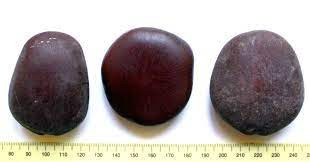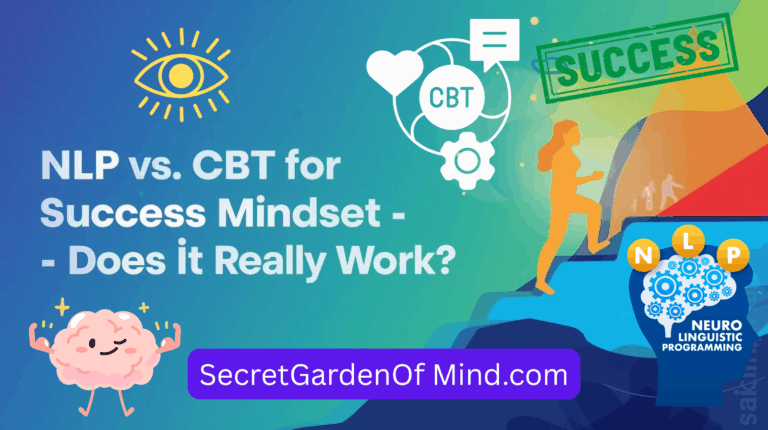Unlocking the Secrets of Entada Rheedii: The African Dream Bean

Entada Rheedii, also known as the African Dream Bean, the snuff box sea bean, and the cacoon vine (In Jamaica) is a plant that holds great cultural significance in African traditions. Its name comes from the Dutch colonial administrator of the East India Company (1669-1676) Hendrik Adriaan van Rheede tot Drakenstein.
In Africa, E. Rheedi is used medicinally to treat jaundice, toothache, ulcers, and muscular-skeletal problems but it is significantly used to help induce vivid dreams and it is believed to hold a connection with the spirit world.
In this blog post, we shall provide a comprehensive overview of Entada Rheedii, including its physical characteristics, historical use, cultural significance, and medicinal properties. We will also take a look at its chemical composition, psychoactive effects, and traditional vs. modern methods of preparation.
As well as its legal status, potential risks, side effects, future research, and applications.
By exploring these various aspects, we hope to shed light on the rich cultural heritage and potential benefits of this fascinating plant, and how it can be used by people looking for ways to Induce more vivid Lucid Dream Experiences.
What Is Entada Rheedii: The African Dream Bean

Entada Rheedii is a large woody vine that belongs to the family Mimosaceae. It is native to tropical regions of Africa, Asia, Australia, and Madagascar. In the wild E. Rheedi can be found in tropical lowlands, along the coastline and river banks, in woodland, thickets, and also riverine rain forests.
The plant is characterized by its long, flat pods that contain large seeds. These seeds are often referred to as “Dream Beans” due to their association with vivid and lucid dreaming experiences.
Historically, Entada Rheedii has been used by various African cultures for its spiritual and medicinal properties. The seeds are often worn as amulets or carried for protection and good luck. They are also used in traditional medicine for their healing properties.
In recent years, Entada Rheedii has gained popularity outside of Africa for its potential psychoactive effects and use in dream enhancement.
The Cultural Significance of Entada Rheedii in African Traditions
Entada Rheedii holds great cultural significance in African traditions. It is believed to have spiritual and protective properties and is often used in rituals and ceremonies. In some cultures, the seeds are considered sacred and are used as offerings to ancestors or deities. They are also used in divination practices to gain insight and guidance.
Different African cultures have their own unique beliefs and practices surrounding Entada Rheedii.
For example, in South Africa, the seeds are used in traditional healing ceremonies to connect with ancestors and spirits. In Tanzania, the seeds are used in rituals to ward off evil spirits and bring good fortune. Whilst In Kenya, the seeds are used in love spells and rituals to attract a desired partner.
In Africa, E. Rheedi is either consumed directly or it is mixed with other herbs or tobacco and smoked just before sleep. It is also made into a topical ointment that is used for medicinal purposes.
In Australia, Aborigines treat E. Rheedi as a regular vegetable that is consumed with their usual meals.
The Medicinal Properties of Entada Rheedii and Its Use in Traditional and Modern Medicine
Entada Rheedii has a long history of use in traditional medicine in Africa. The plant is believed to have various medicinal properties and is used to treat a wide range of ailments.
The seeds, in particular, are highly valued for their healing properties.
In traditional medicine, Entada Rheedii is used as an analgesic to relieve pain, as an anti-inflammatory to reduce swelling and inflammation, and as a diuretic to promote urine production and detoxification.
Some other uses of Entada Rheedi include;
- Wound Healing: In parts of Asia, a paste made from the leaves, bark, and roots of the plant is used to clean wounds and treat burns. The plant’s medicinal properties are believed to promote healing and reduce the risk of infection.
- Jaundice Treatment: In Asian traditional medicine, the paste made from E. Rheedii is used to heal jaundice in children.
- Circulation and Stroke After-Effects: A tea made from the whole plant is used in some Asian traditional practices to improve blood circulation to the brain and to aid in the recovery from the after-effects of a stroke.
- Gastrointestinal Issues: The bark of E. Rheedii is used to treat various GI problems, including diarrhea, dysentery, and parasitic infections.
- Pain Relief and Fever: Both the bark and seeds of E. Rheedii contain saponins, which are believed to have medicinal properties. They are traditionally used to alleviate pain, itch, and possibly fever.
- Colic Treatment: Seeds of E. Rheedii are used as a traditional remedy to relieve colic in children.
- Topical Ointment: E. Rheedi is used as a topical ointment in some traditional practices to address jaundice, toothache, ulcers, and muscular-skeletal problems.
However, It is important to note that while E. Rheedii has been used traditionally for various purposes scientific research on its medicinal properties is limited. As with any traditional remedy or herbal medicine, caution should be exercised, and it is advisable to consult with a qualified healthcare professional before using E. Rheedii for medicinal purposes.
The Chemical Composition of Entada Rheedii
Entada Rheedii contains a variety of chemical compounds that contribute to its medicinal and psychoactive effects. The seeds, in particular, are rich in alkaloids, flavonoids, saponins, and tannins.
One of the active compounds found in Entada Rheedii is Entadamide A, which has been shown to have analgesic and anti-inflammatory properties. Another compound, Entadamide B, has been found to have antimicrobial activity.
Other compounds found in E. Rheedii, such as flavonoids and saponins, have antioxidant and anti-inflammatory effects.
The Psychoactive Effects of Entada Rheedii and Its Use in Dream Enhancement
Entada Rheedii is known for its psychoactive effects, particularly its ability to enhance dream experiences. Many people report having vivid and lucid dreams after consuming the seeds or extracts of Entada Rheedii.
The psychoactive effects of Entada Rheedii are believed to be due to its interaction with the brain’s neurotransmitters and receptors. It is thought to enhance the production of dopamine, a neurotransmitter that plays a key role in regulating mood, sleep, and dreaming.
By increasing dopamine levels, Entada Rheedii may promote more vivid and memorable dream experiences.
The Traditional Methods of Preparing Entada Rheedii for Consumption
In traditional African cultures, Entada Rheedii is prepared in various ways for consumption. One common method is to grind the seeds into a powder and mix it with water or other liquids. This mixture is then consumed orally or used topically for medicinal purposes.
Another traditional method of preparation involves soaking the seeds in water or alcohol to extract their active compounds. The resulting liquid is then consumed or used in rituals and ceremonies.
Smoking dried E. Rheedii beans is also another method used especially to induce vivid and lucid dreams.
The Modern Methods of Extracting and Using Entada Rheedii
In modern times, there are various methods of extracting and using Entada Rheedii. One popular method is to make a tincture by soaking the seeds in alcohol for several weeks. The resulting tincture can be consumed orally or used topically.
Another modern method is to make the African Dream Bean into a kind of tea by steeping the seeds in hot water. This allows the active compounds to be extracted and consumed in a more palatable form.
The Legal Status of Entada Rheedii and Its Availability in Different Countries
The legal status of Entada Rheedii varies from country to country. In some countries, such as South Africa and Tanzania, the plant is considered a cultural heritage and is protected by law. In other countries, it may be legal to possess and use Entada Rheedii for personal use, but illegal to sell or distribute it.
*Note I am not aware of any countries where this is illegal but this doesn’t mean there isn’t any (I don’t actually know).
The availability of Entada Rheedii also varies depending on the country. In Africa, the plant is readily available and can be found in local markets and traditional medicine shops. Outside of Africa, it may be more difficult to find, but it can often be purchased online from reputable suppliers.
The Potential Risks and Side Effects of Using Entada Rheedii
While Entada Rheedii is generally considered safe when used responsibly, there are some potential risks and side effects to be aware of. Some individuals may experience allergic reactions or digestive upset when consuming the seeds or extracts of Entada Rheedii.
The main risks and side effects are as follows;
- Psychoactive Effects: The seeds of E. Rheedii are reported to have mild psychoactive effects, and using them may alter one’s consciousness and dream states. These effects can be unpredictable and vary from person to person.
- Allergic Reactions: Like any natural substance, some individuals may be allergic to certain components of this plant. Allergic reactions can range from mild skin irritation to severe allergic responses. If you are prone to allergies, it’s essential to exercise caution and perform a patch test before using any parts of the plant.
- Toxicity: While traditional methods, such as leaching the seeds, are used to reduce the toxicity of Entada Rheedii seeds, consuming large quantities or improperly prepared seeds may still pose a risk of toxicity. Ingesting toxic substances can lead to adverse effects and health complications.
- Drug Interactions: Entada Rheedii may interact with certain medications, including prescription drugs and over-the-counter medications. If you are taking any medications, especially those that affect the central nervous system or have sedative properties, it is essential to consult with a healthcare professional before using E. Rheedii.
- Gastrointestinal Disturbances: The use of E. Rheedii, especially in large amounts, may cause gastrointestinal disturbances such as nausea, vomiting, or diarrhea.
It is also important to note that the plant may interact with certain medications, so it is advisable to consult with a healthcare professional before using E. Rheedi are any other Lucid Dreaming Herbs and plants.
The Future of Entada Rheedii Research and Its Potential Applications in Medicine and Psychology
Despite its long history of use in traditional medicine, there is still much to learn about the potential benefits and applications of Entada Rheedii. Current research is focused on exploring its chemical composition, pharmacological properties, and potential therapeutic uses.
In the field of medicine, Entada Rheedii shows promise as a natural alternative for pain relief, inflammation reduction, and antimicrobial treatment. It may also have potential applications in the treatment of mental health conditions such as depression and anxiety.
In the field of psychology, Entada Rheedii’s ability to enhance dream experiences has sparked interest in its potential use in dream therapy and lucid dreaming techniques.
Further research is needed to explore its effects on sleep quality, dream recall, and overall mental well-being.
In Conclusion
Entada Rheedii, the African Dream Bean, is a plant that holds great cultural significance in African traditions. It has been used for centuries for its spiritual, medicinal, and psychoactive properties. While more research is needed to fully understand its potential benefits and applications, Entada Rheedii shows promise as a natural remedy for various ailments and as a tool for enhancing dream experiences.
As interest in traditional medicine and alternative therapies continues to grow, it is important to explore the potential of plants like Entada Rheedii and their role in promoting health and well-being.
Where To Buy Entada Rheedi
Entada Rheedi is available to buy from all the following marketplaces;
Related Posts:
- How To Keep Yourself In a Lucid Dream?
- How To Make Calea Zacatechichi Tea For Lucid Dreaming
- What Is Silene Capensis African Dream Root – 5 Important Things To Know
- Galantamine and Choline In Lucid Dream Supplements
- Lucid Dreams and Meditation – The Common Link
- Can You Train Your Brain To Lucid Dream? and Other FAQ’s
- Understanding Lucid Dreams: A Guide to Lucid Dream Analysis
- Does Milk Affect Lucid Dreaming? Strange Fact or Myth?
- Exploring Lucid Dreaming Masks and How They Work?
FAQs
Entada Rheedii, also known as the African Dream Herb or Snuff Box Sea Bean, is used for various purposes in traditional medicine among indigenous tribes in Africa and other regions. It is believed to induce vivid dreams, promote communication with ancestors, and is also used for spiritual and ritualistic practices.
Entada Rheedii, commonly referred to as the drift seed from tropical Africa, is a large woody vine that produces large seeds known as “dream seeds” or “African dream snuff.” These seeds have been traditionally used for their dream-enhancing properties and other cultural and spiritual significance.
The common name for Entada Rheedii is the African Dream Bean or Snuff Box Sea Bean.
The health benefits of Entada Rheedii have been mainly derived from traditional use and cultural beliefs. Some reported health benefits include dream enhancement, potential psychoactive effects, wound healing properties, and its use in traditional remedies for various gastrointestinal issues.
However, it is essential to note that scientific research on its health benefits is limited, and caution should be exercised when using it for medicinal purposes.
Growing Entada Rheedii requires suitable tropical or subtropical conditions. It is a large woody vine that prefers well-draining soil and ample sunlight. Propagation is typically done through seeds or cuttings. However, specific growing guidelines may vary, and it is best to seek expert advice or references for proper cultivation techniques.
Sea beans, including Entada Rheedii, have spiritual significance in various cultures. They are used for spiritual practices, such as connecting with ancestors, promoting good luck, and serving as charms or talismans to protect against negative energies.
While some parts of Entada Rheedii have been used traditionally for medicinal and cultural purposes, it is not widely known as an edible plant. The seeds, in particular, have psychoactive effects and should not be consumed without proper knowledge and guidance.
The term “sea bean” refers to various seeds and fruits that are dispersed by ocean currents and wash up on shores worldwide. Entada Rheedii is one such plant, and its large seeds are commonly known as sea beans.
Sea beans, including Entada Rheedii seeds, are believed to bring good luck and protection in some cultures. They are often used as charms or amulets to attract positive energies and ward off negative influences. However, beliefs and interpretations may vary among different communities.



